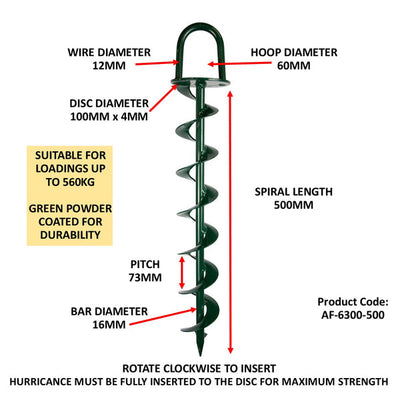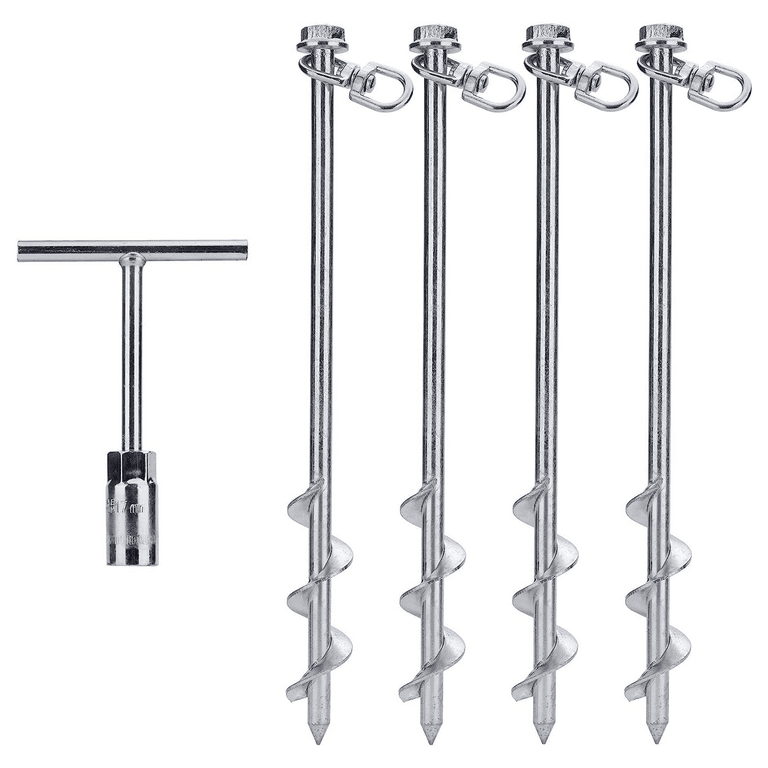Security Experts Share Insights on the Best Ground Anchor Solutions
Security Experts Share Insights on the Best Ground Anchor Solutions
Blog Article
Check Out the Various Kinds Of Ground Support for Your Next Task
From auger supports, which excel in varied dirt conditions, to risk supports made for short-lived setups, the alternatives are many. In addition, concrete and screw anchors existing special benefits in specific circumstances, while deadman anchors are tailored for applications needing resistance to side pressures.

Auger Anchors
Auger anchors are a popular choice in different construction and landscaping jobs as a result of their distinct style and effective securing capabilities. These supports are composed of a helical screw-like shaft that is driven right into the ground, enabling a stable and safe hold. The spiral layout promotes simple setup and optimizes resistance against side pressures, making auger anchors especially effective in applications such as fence, temporary structures, and disintegration control.
The setup process of auger anchors is relatively simple. Auger supports can be quickly gotten rid of and reused, which adds to their cost-effectiveness and sustainability.
Among the considerable benefits of auger anchors is their capacity to distribute loads equally across the bordering dirt, minimizing the danger of dirt disturbance and lessening environmental effect. Furthermore, they are less susceptible to heaving or loosening up over time compared to traditional anchoring techniques. Auger anchors are an outstanding option for projects requiring long lasting and dependable anchoring options.

Stake Anchors
When it concerns safeguarding structures in a selection of outdoor applications, risk anchors supply a dependable and uncomplicated remedy. These supports are commonly built from sturdy products such as steel or aluminum, made to withstand environmental anxieties while supplying ideal stability. Their straightforward layout permits fast installment, making them an excellent selection for momentary or long-term anchoring requirements.
Risk supports are particularly valuable in protecting outdoors tents, canopies, and various other lightweight structures versus wind and weather. They operate by being driven into the ground at an angle, creating a strong hold that stands up to pull-out forces - Ground Anchor. The effectiveness of stake supports depends upon several variables, including dirt type, moisture web content, and the angle of installment
For added security, several stake anchors feature accessory factors for ropes or straps, permitting for tension modifications as required. In applications such as landscaping or building, they can effectively maintain devices or frameworks on irregular surface. Generally, risk anchors give a cost-efficient and functional option for protecting numerous outdoor setups, making them a recommended choice for specialists and DIY enthusiasts alike.
Concrete Anchors
Concrete anchors provide a durable solution for protecting frameworks to concrete surfaces, making certain security and safety in various applications. These anchors are necessary for tasks varying from property constructions to large commercial installments. They come in different types, consisting of growth supports, adhesive anchors, and undercut supports, each developed for details tons requirements and environmental problems.
Adhesive anchors use high-strength epoxy or resin to bond the anchor to the concrete, offering exceptional load-bearing capacities, especially in broken concrete scenarios. Undercut anchors produce an one-of-a-kind form within the concrete, providing outstanding holding power, specifically in applications where tensile loads are widespread.
Choosing the ideal concrete support includes thinking about aspects such as the weight of the tons, the condition of the concrete, and environmental conditions. Proper installment methods are vital to make certain ideal efficiency and integrity. When performed appropriately, concrete supports significantly boost the architectural stability of various projects, making them vital in contemporary construction methods. Understanding the particular requirements of your job will assist in picking the appropriate kind of concrete support for the job.
Screw Anchors

Screw supports are a flexible attaching solution that can be effectively used in a variety of applications where traditional concrete supports might not be adequate. These supports include a helical style that allows them to be easily driven into the ground, making them perfect for use in dirt and various other substratums. Their special framework gives superb holding power and resistance to pull-out pressures, making them ideal for countless jobs, from landscaping to architectural assistance.
Among the main advantages of screw anchors is their ease of installment. They require marginal tools and can usually be mounted without the need for excavation, which conserves both time and labor costs. Furthermore, screw anchors can be gotten rid of and recycled, providing a lasting remedy for short-term applications.
Screw supports are particularly helpful in areas where dirt conditions are challenging, such as loosened or sandy dirts. Their ability to be set up at differing link midsts permits personalization based on particular task needs. Generally, screw supports supply a efficient and trustworthy anchoring technique, making them an exceptional choice for professionals and engineers looking for efficient remedies for their projects.
Deadman Anchors
Deadman anchors serve as a durable service for supporting structures in difficult conditions, specifically where conventional securing approaches may fail. These anchors consist of huge, hefty items buried underground, which develop resistance versus side forces. The style normally entails a straight element, such as a block of concrete or a metal plate, hidden in the dirt, to which bands or cords are connected.
The effectiveness of deadman supports lies in their ability to disperse tons over a bigger location, decreasing the danger of failure in unsteady soil problems. They are specifically advantageous in applications such as maintaining walls, short-term frameworks, and slope stabilization, where dirt motion can endanger the stability of the framework.
Setup of deadman supports requires mindful preparation to guarantee they are positioned at the proper deepness and orientation, optimizing their load-bearing capability. While they might need even more labor and product than lightweight supports, their integrity in negative problems makes them very useful for long-lasting tasks. In addition, deadman anchors are flexible and can be adjusted to various applications, making them a best selection for engineers dealing with distinct difficulties in their projects.
Conclusion
In summary, picking the proper kind of ground support is crucial for making sure security and safety in different projects. Auger anchors stand out in varied soil conditions, while stake supports suit short-lived applications. For concrete surface areas, growth and sticky supports offer trusted options, and screw anchors offer convenience in tough terrains. Deadman anchors are particularly reliable in withstanding lateral pressures for preserving wall surfaces. Cautious consideration of these alternatives will certainly boost task results and architectural honesty.
Additionally, concrete and screw supports existing go now unique benefits in details circumstances, while deadman anchors are tailored for applications calling for resistance to lateral pressures - Ground Anchor.Auger supports are a popular option in numerous construction and landscape design projects due to their special design and effective anchoring capacities. They come in various kinds, consisting of expansion anchors, adhesive anchors, and undercut anchors, each designed for specific click this site load demands and ecological problems
Sticky supports make use of high-strength epoxy or resin to bond the anchor to the concrete, providing premium load-bearing capabilities, especially in split concrete scenarios. In general, screw anchors give a trusted and reliable securing technique, making them an exceptional option for specialists and designers seeking effective remedies for their jobs.
Report this page